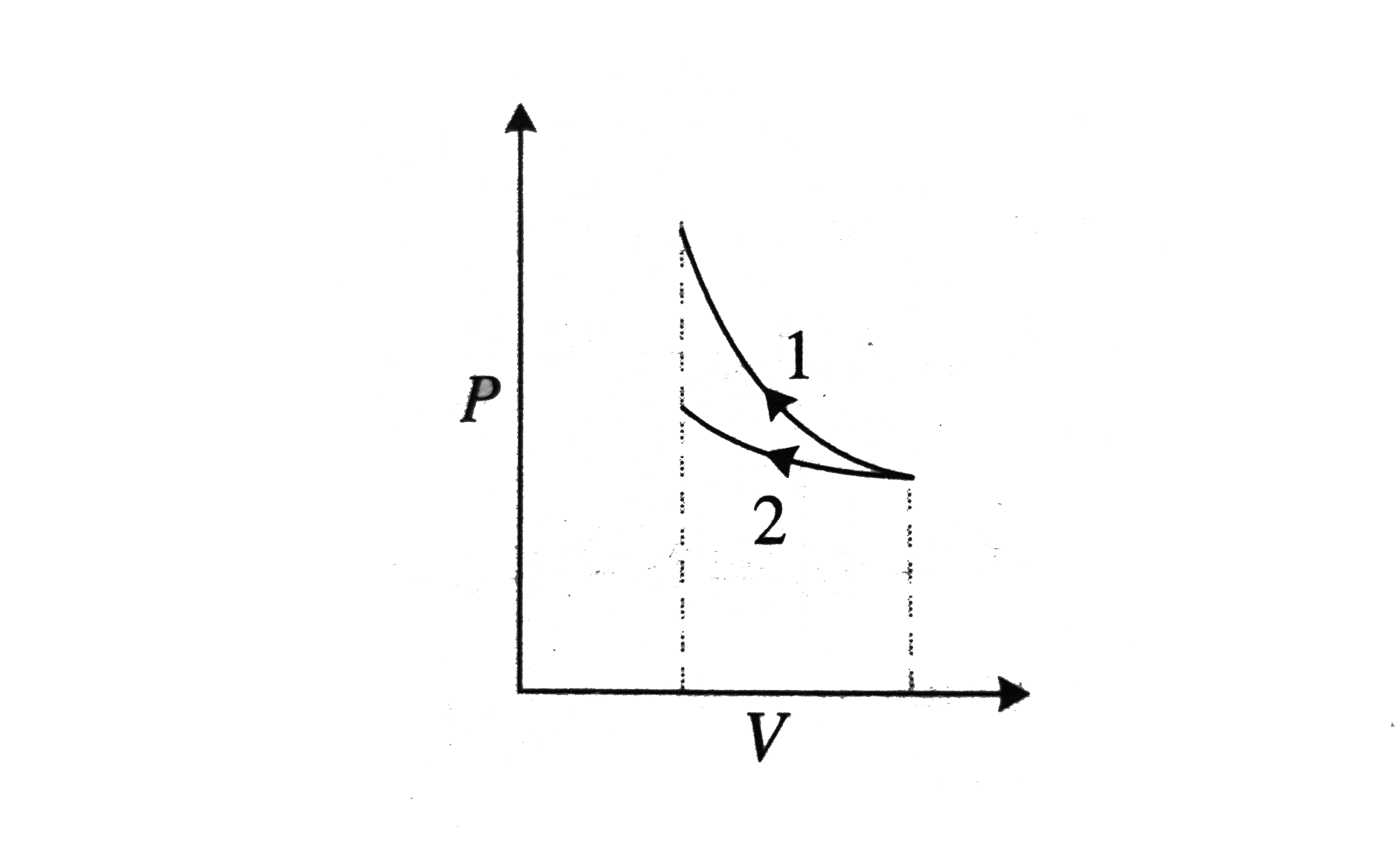A spring, which is initially in its unstretched condition, is first stretched by a length x and then again by a further length x. The work done in the first case is W1 and in the second case is W2.
W1=4W
W1=3W
W1=W
W1=2W
The correct Answer is:B
To solve the problem, we need to calculate the work done on a spring when it is stretched in two different scenarios.
1. Understanding the Work Done on a Spring:
The work done on a spring when it is stretched is given by the formula:
W=12kx2
where W is the work done, k is the spring constant, and x is the extension of the spring.
2. Calculating Work Done in the First Case:
In the first case, the spring is stretched by a length x:
W1=12kx2
This is our equation (1).
3. Calculating Work Done in the Second Case:
In the second case, the spring is first stretched by x and then further stretched by another x, making the total stretch 2x. The work done in this case can be calculated as follows:
W2=12k(2x)2
Simplifying this gives:
W2=12k(4x2)=2kx2
4. Finding the Work Done in the Second Stretch:
However, we need to find the work done during the second stretch (from x to 2x). This can be calculated as:
Wsecond stretch=W2−W1
Substituting the values we found:
Wsecond stretch=2kx2−12kx2=4kx22−12kx2=32kx2
5. Relating the Two Works:
Now we can relate W2 to W1:
W2=2kx2=4⋅12kx2=4W1
Therefore, we find that:
W2=3W1
Conclusion:
The relationship between the work done in the first and second cases is:
W2=3W1
The work done on a spring when it is stretched is given by the formula:
W=12kx2
where W is the work done, k is the spring constant, and x is the extension of the spring.
In the first case, the spring is stretched by a length x:
W1=12kx2
This is our equation (1).
In the second case, the spring is first stretched by x and then further stretched by another x, making the total stretch 2x. The work done in this case can be calculated as follows:
W2=12k(2x)2
Simplifying this gives:
W2=12k(4x2)=2kx2
However, we need to find the work done during the second stretch (from x to 2x). This can be calculated as:
Wsecond stretch=W2−W1
Substituting the values we found:
Wsecond stretch=2kx2−12kx2=4kx22−12kx2=32kx2
Now we can relate W2 to W1:
W2=2kx2=4⋅12kx2=4W1
Therefore, we find that:
W2=3W1
The relationship between the work done in the first and second cases is:
W2=3W1
Similar Questions
A spring of force constant K is first stretched by distance a from its natural length and then further by distance b. The work done in stretching the part b is
View SolutionAn elastic string of unstretched length L and force constant k is stretched by a small length x. It is further stretched by another small length y. The work done in second stretching is
View SolutionAn elastic spring of unstretched length L and spring constant K is stretched by a small length x. It is further stretched by another small length y. the work done in second stretcing is
View SolutionA string of length L and force constant k is stretched to obtain extension l. It is further stretched to obtain extension l1. The work done in second stretching is
View SolutionA spring is stretched by distance x and then compressed to same distance from its original length. The work done by the spring force is (k=spring constant)
View SolutionA certain mass of a gas is compressed first adiabatically, and then isothermally. In both cases, the initial state of the gas is the same. Is the work done W1 in the first case greater than the work done W2 in the second case ? Explain.

View SolutionA spring of force constant K is cut in two parts at its one third length. When both the parts are stretched by same amount, the work done in the two parts, will be :−
View SolutionTwo equal masses are attached to the two ends of a spring of spring constant k. The masses are pulled out symmetrically to stretch the spring by a length x over its natural length. The work done by the spring one each mass is
View SolutionTwo elastic waves move along the same direction in the same medium. The pressure amplitudes of both the waves are equal, but the wavelength of the first wave is three times that of the second. If the average power transmitted through unit area by the first wave is W1 and that by the second is W2, then
View SolutionA mass is suspended separately by two springs and the time periods in the two cases are T1 and T2. Now the same mass is connected in parallel (K=K1+K2) with the springs and the time is suppose TP. Similarly time period in series is TS, then find the relation between T1,T2 and TP in the first case and T1,T2 and TS in the second case.
View Solution
